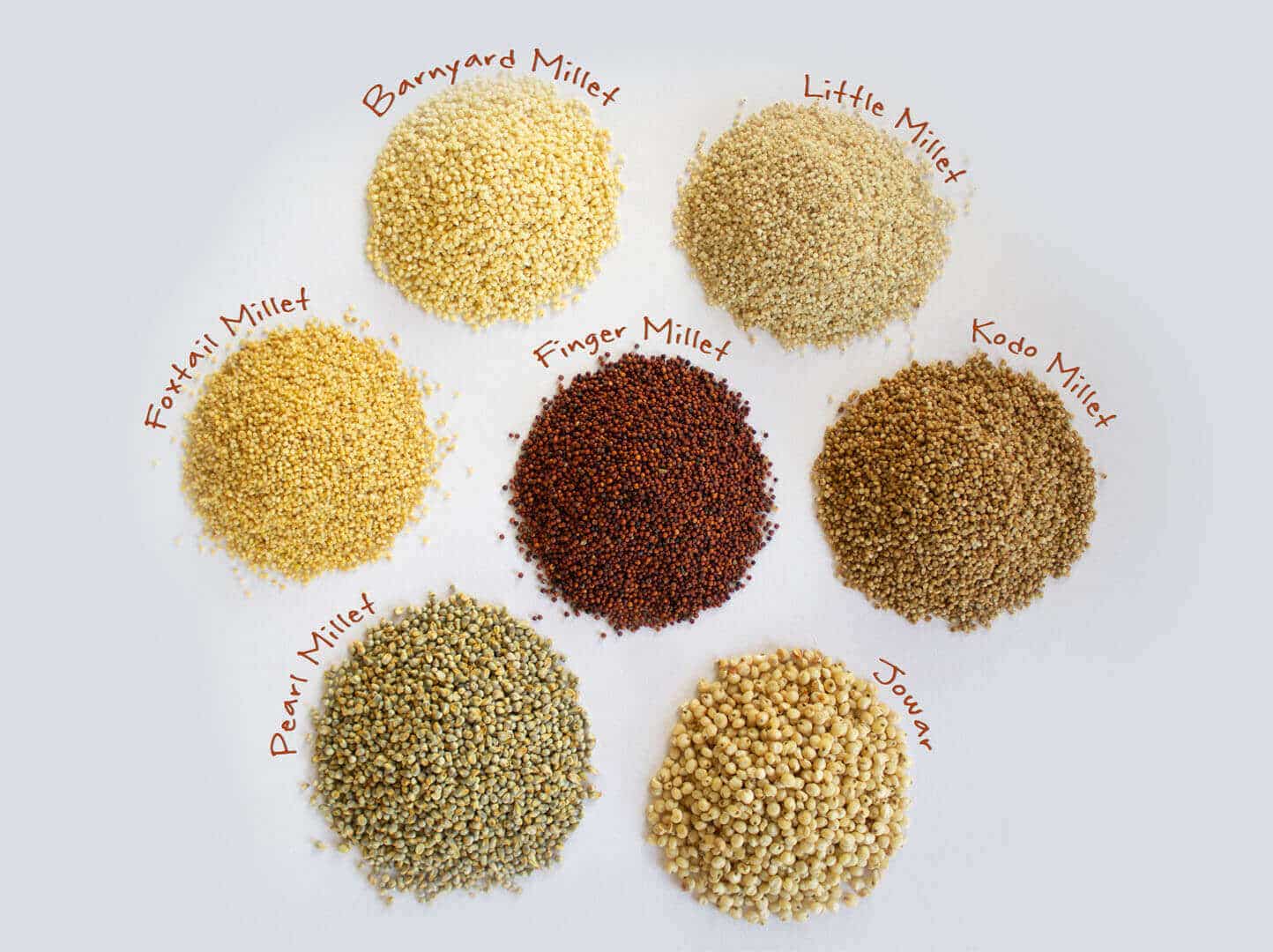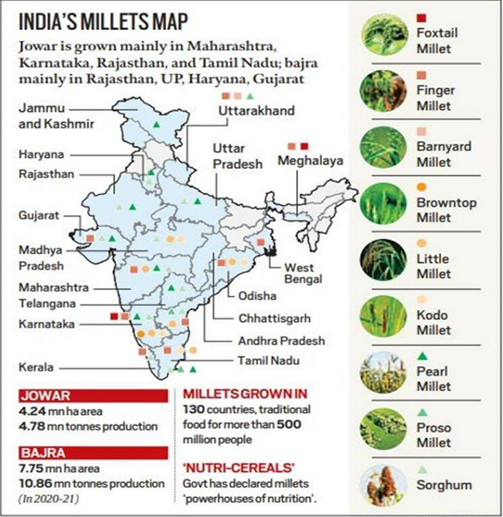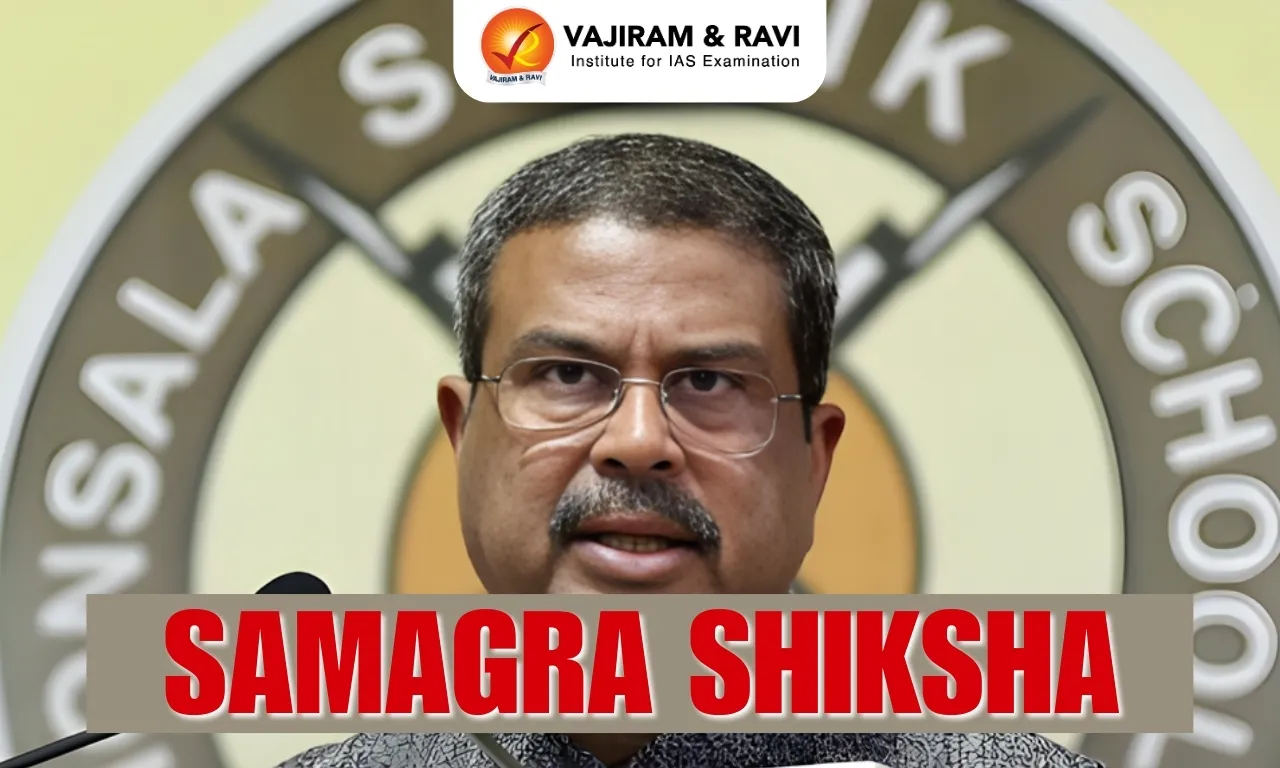What’s in today’s article:
- Millets – about, historical background, millets around the world, significance
- Millets in India – Production, millets under PDS, steps taken by the govt
Why In News:
- A pre-launch celebration of International Year of Millets was held recently in New Delhi.
- It was organised by the Ministries of Agriculture and External Affairs.
Millets
- The word “millets” is used to describe small-grained cereals like sorghum (jowar), pearl millet (bajra), foxtail millet (kangni/ Italian millet), little millet (kutki), etc.
- They require much less water than rice and wheat, and are mainly grown in rainfed areas.
Historical background:
- Millets were among the first crops to be domesticated.
- There is evidence for consumption of millets by the Indus valley people (3,000 BC), and several varieties that are now grown around the world were first cultivated in India.
- West Africa, China, and Japan are home to indigenous varieties of the crop.
Millets around the world
- Globally, sorghum (jowar) is the biggest millet crop.
- The major producers of jowar are United States, China, Australia, India, Argentina, Nigeria, and Sudan.
- Bajra is another major millet crop; India and some African countries are major producers.
Significance
- Food security
- Millets are a climate-friendly crop that can even be grown in drought-hit areas.
- COVID was a period that reminded the world what a pandemic could do to food security. Hence, experts are highlighting the importance of millets.
- High nutritive value
- Millets are considered to be powerhouses of nutrition. In April 2018, the Agriculture Ministry declared certain millets as Nutri Cereals for the purposes of production, consumption, and trade
- These include:
- Jowar, bajra, ragi/ mandua,
- the minor millets — kangani/ kakun, cheena, kodo, sawa/ sanwa/ jhangora, and kutki
- the two pseudo millets, buckwheat (kuttu) and amaranth (chaulai).
- These include:
- Millets are more nutritious compared to fine cereals. Millets contain 7-12% protein, 2-5% fat, 65-75% carbohydrates and 15-20% dietary fibre.
- Millets are considered to be powerhouses of nutrition. In April 2018, the Agriculture Ministry declared certain millets as Nutri Cereals for the purposes of production, consumption, and trade
- Political significance
- Millet is grown mainly in low-income and developing countries in Asia and Africa, and are part of the food basket of about 60 crore people across the globe.
- By proposing the resolution to celebrate 2023 as the International Year of Millets, India pitched itself as a leader of this group.
- This is similar to the Indian initiative on the 121-nation International Solar Alliance.
- Health benefits
- Millets reduce Anemia, liver disorders, and Asthma.
- Their high dietary fiber provides hunger satisfaction and helps reduce obesity and the risk of Type II Diabetes.
Millets in India
Production
- As per the data of Agriculture Ministry, in India, millets are mainly a kharif crop.
- During 2018-19, three millet crops — bajra (3.67%), jowar (2.13%), and ragi (0.48%) — accounted for about 7 per cent of the gross cropped area in the country.
- Jowar is mainly grown in Maharashtra, Karnataka, Rajasthan, Tamil Nadu, Andhra Pradesh, Uttar Pradesh, Telangana, and Madhya Pradesh.
- Maharashtra accounted for the largest area and production of jowar during 2020-21.
- Bajra is mainly grown in Rajasthan, Uttar Pradesh, Haryana, Gujarat, Madhya Pradesh, Maharashtra and Karnataka.
- Rajasthan accounted to the largest area and production of Bajra during 2020-21.
Millets under PDS
- Under the National Food Security Act (NFSA), 2013, eligible households are entitled to get rice, wheat, and coarse grain at Rs 3, Rs 2, and Re 1 per kg respectively.
- While the Act does not mention millets, coarse grains are included in the definition of “foodgrains” under Section 2(5) of the NFSA.
- However, the quantity of coarse grains procured for the Central Pool and distributed under the NFSA has been negligible.
Steps taken by the govt.
- The push to distribute coarse grains under the PDS has not gained momentum.
- The Centre has accepted the recommendation of a committee set up by it, that millets be included in the PDS in order to improve nutritional support.
- The government has set a target to procure 13.72 LMT coarse grains during the Kharif Marketing Season (KMS) 2022-23, more than double the 6.30 LMT procured during KMS 2021-22.
Year of Millets
- In March, 2021, the United Nations General Assembly (UNGA) adopted a resolution to declare 2023 as the International Year of Millets.
- The proposal was moved by India, and was supported by 72 countries.
- The International Year of Millets will raise awareness about the importance of millets in food security and nutrition.
Last updated on January, 2026
→ Check out the latest UPSC Syllabus 2026 here.
→ Join Vajiram & Ravi’s Interview Guidance Programme for expert help to crack your final UPSC stage.
→ UPSC Mains Result 2025 is now out.
→ UPSC Notification 2026 is scheduled to be released on January 14, 2026.
→ UPSC Calendar 2026 has been released.
→ UPSC Prelims 2026 will be conducted on 24th May, 2026 & UPSC Mains 2026 will be conducted on 21st August 2026.
→ The UPSC Selection Process is of 3 stages-Prelims, Mains and Interview.
→ Prepare effectively with Vajiram & Ravi’s UPSC Prelims Test Series 2026 featuring full-length mock tests, detailed solutions, and performance analysis.
→ Enroll in Vajiram & Ravi’s UPSC Mains Test Series 2026 for structured answer writing practice, expert evaluation, and exam-oriented feedback.
→ Join Vajiram & Ravi’s Best UPSC Mentorship Program for personalized guidance, strategy planning, and one-to-one support from experienced mentors.
→ UPSC Result 2024 is released with latest UPSC Marksheet 2024. Check Now!
→ UPSC Toppers List 2024 is released now. Shakti Dubey is UPSC AIR 1 2024 Topper.
→ Also check Best UPSC Coaching in India


















